1. Bulldog: From Athlete to Icon

The original English bulldog of the 1800s was an athletic working dog, built with longer legs, a flatter rib cage, and wider nostrils, reflecting its use in sports like bull-baiting. Following the ban of these bloody sports in 1835, selective breeding prioritized a new aesthetic. This emphasis led to the incredibly stocky body, pronounced underbite, rounded skull, and short muzzle known today. While this modern appearance is iconic, the exaggerated features have unfortunately reduced the breed’s breathing efficiency and created a significant vulnerability to heat, fundamentally shifting its physiology from function to form.
2. German Shepherd: The Sloping Backline

Early 20th-century German Shepherds, valued primarily for herding and police work, featured backs that were straighter and leg structures that were more proportional. However, as the breed gained popularity in dog shows, evolving standards began to favor an extreme, sloped rear that was believed to produce a “smooth, low-to-the-ground gait.” This pursuit of an exaggerated silhouette has dramatically changed the breed’s posture. Critics and veterinarians now note that this pronounced slope contributes significantly to the prevalence of hip and elbow dysplasia, making the original, straighter build the preferred structure for active working-line dogs.
3. Pug: The Shortened Snout

Historical pugs were leaner dogs with more functional, longer snouts and legs, which allowed for easier breathing and greater agility. As the “flat-faced” look became desirable, a trait often associated with cuteness, breeding selection pushed the nose to shorten until the nasal passages became severely compressed. This intensive focus on brachycephaly, or a shortened head, introduced significant health challenges, including chronic respiratory issues and a high risk of overheating. Veterinary experts worldwide now classify the resulting brachycephalic airway syndrome as a major breed-related health concern for the modern, compactly shaped pug.
4. Dachshund: Exaggerated Elongation

Originally bred in Germany for a demanding and dangerous job, hunting badgers underground, early Dachshunds had a long body, but their spinal length and leg height were more moderate than today. Over time, breeders selectively emphasized an extremely long spine and dramatically shortened legs to achieve a more striking silhouette. While instantly recognizable, this extreme elongation has increased the breed’s susceptibility to serious spinal disc issues, collectively known as Intervertebral Disc Disease (IVDD). Historical photographs illustrate a sturdier, more agile proportion that was better suited for navigating underground tunnels than the modern, exaggerated form.
5. Boxer: Broader and Brachycephalic

The Boxer breed once had a longer, more angular muzzle, a feature well-suited for its original roles in hunting and guarding. As show ring standards evolved, the preference shifted toward a shorter, more powerful face and a pronounced jawline. This change was part of a broader trend toward a shorter muzzle and a heavier, broader chest. Although the Boxer remains an athletic dog, the shortening of the muzzle, similar to pugs and bulldogs, has increased their vulnerability to heat stress and respiratory issues. This divergence highlights a shift from prioritizing performance efficiency to visual impact.
6. Saint Bernard: Heavy Coat and Frame
The Saint Bernard’s historical purpose was rugged: assisting with rescue operations in the treacherous, snowy Swiss Alps. Their early build reflected this job, featuring a leaner body, a shorter coat, and a frame that allowed for agility in harsh mountain environments. Over the last century, selective breeding focused heavily on show traits, resulting in a dog with a much larger, heavier frame and a substantially longer, denser coat. While these changes make the modern Saint Bernard visually impressive, they render the breed less suited for true working agility, and today they primarily serve as companion animals, while rescue work is handled by specialized human teams.
7. Basset Hound: Skin and Spinal Changes
The Basset Hound’s original form had shorter ears, tighter skin around the face, and more proportionate leg length relative to its body. However, show breeding standards celebrated and exaggerated certain features. This led to the exceptionally long, flowing ears and pronounced facial folds seen today, which, while visually defining, significantly increase the risk of chronic ear infections and skin irritation. Simultaneously, the dramatic elongation of the body coupled with the extremely short legs has placed increased and unnecessary stress on the spine, a common consequence when extreme proportions are prioritized over functional health.
8. Bull Terrier: The Egg-Shaped Head

The early Bull Terrier had a skull shape that was more standard, maintaining a clear “stop” where the forehead meets the muzzle, as was common with its bulldog and terrier ancestors. The distinctive, signature “egg-shaped” head, a continuous, smooth, downward curve from the top of the skull to the tip of the nose, is a relatively modern creation. Developed through generations of meticulous selection for this specific profile, the unique structure also altered the dog’s jaw and bite alignment. This makes the Bull Terrier a prime example of a breed whose most recognized physical trait was deliberately engineered rather than inherited from its earliest form.
9. Irish Setter: The Flowing Coat

The Irish Setter was originally bred as a functional gundog, designed for efficient field utility, which required locating game and covering large amounts of ground. Their coats were shorter, more manageable, and their frames were more compact for strenuous work. Modern show standards, however, have strongly favored a much longer, silkier, and dramatically flowing coat, along with a more refined, slimmer build. While this appearance is visually striking in the ring, the luxurious coat demands extensive grooming and is less practical for true field work, leading to a distinct divergence between “working-line” dogs and “show-line” dogs.
10. Shar-Pei: Intensified Wrinkling
The original Shar-Pei was a village working dog with a straightforward build and only moderate wrinkling around the face and shoulders, intended to help it evade grips during a fight. The greatly intensified, excessive wrinkling seen in many modern Shar-Peis became the breed’s visual trademark but is a result of selective breeding for novelty in the mid-20th century. This abundance of skin folds, though distinctive, tragically introduces health risks, including skin infections, irritation, and a condition known as entropion, where the eyelid turns inward, potentially causing vision impairment.
11. Sheltie (Shetland Sheepdog): Refined Delicacy

The Sheltie, or Shetland Sheepdog, was initially a more rugged, compact working collie used for herding small livestock on the harsh, climate-battered Shetland Islands. Its build was durable, and its coat was practical. As the breed entered the show circuit, selection focused on traits that resulted in a more elegant and “refined” look: longer coats, a narrower, more tapered face, and a more delicate bone structure. While maintaining the breed’s high intelligence, these changes created a higher-maintenance companion dog that is visually quite different from its tough, early working ancestors.
12. Rottweiler: Focus on Bulk
Historically, Rottweilers were essential cattle-driving dogs, requiring a muscular but moderate and agile build that allowed for long periods of movement. Their working frame was powerful but not as block-heavy as the extreme examples often seen today. Modern breeding, especially within show lines, has often emphasized sheer size and mass, increasing shoulder width and overall bulk to create a more imposing presence. While strength is inherent to the breed, the pursuit of extreme mass can unfortunately reduce a dog’s agility and lead to increased stress on joints, potentially reducing overall longevity.
13. Scottish Terrier: Low-Slung Silhouette

Early Scottish Terriers had a body and leg length that was more moderate, enabling greater mobility in hunting vermin. The breed’s current, very low-slung, “dirt-hugging” silhouette is the result of selective breeding that dramatically shortened the legs and simultaneously thickened the torso. This has intensified their iconic look but also significantly increased the mechanical pressure on the spine and joints. Furthermore, the coat evolved from a practical, weather-resistant working jacket to a thicker texture that requires extensive stripping and grooming to achieve the sculpted, show-ring appearance.
14. Mastiff: Extreme Scale
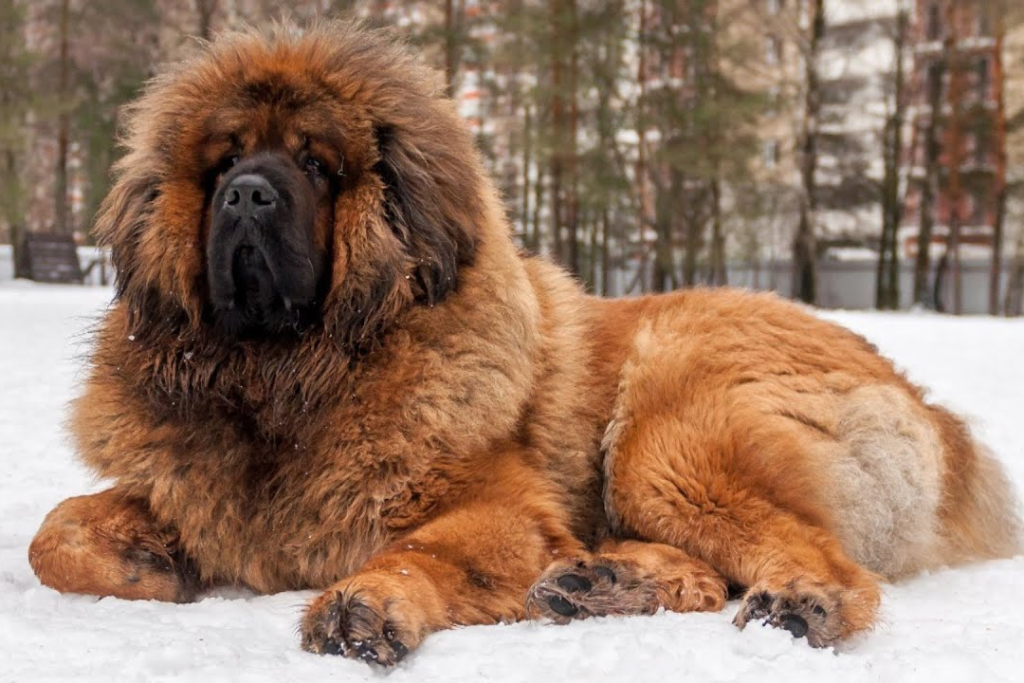
While Mastiffs have always been known for their large size, the modern trend often focuses on amplifying this trait to an extreme degree. Historically, early Mastiffs were large but maintained a more athletic, versatile build, suitable for working roles like guarding and even hunting. The modern push for colossal mass, particularly in show lines, creates a visually stunning dog but places immense stress on the cardiovascular and skeletal systems. This exaggerated size contributes directly to joint strain and a noticeably shorter average lifespan compared to their more moderately built ancestors.
15. Collie: The Elongated Face

The Rough Collie underwent a significant transformation in the 20th century. Earlier versions of the breed possessed a shorter muzzle and a less pronounced facial taper. Modern breeding, heavily influenced by the breed’s popularity in film and media, selected for a greatly stretched and elongated profile, resulting in the long, refined muzzle associated with the iconic character “Lassie.” While elegant, this change altered the structure of the dog’s jaw and influenced dental alignment. Performance-focused Collies, such as Border Collies, retained the original functional features and followed a completely separate breeding path.
16. Poodle: The Practicality of Coat
The Poodle’s core body structure, intelligent mind, and excellent swimming ability remain largely unchanged, reflecting its origins as an aquatic hunting and retrieving dog. However, the use and appearance of its coat have changed dramatically. Early Poodles had a dense, protective coat that was often shaved in specific patterns, like the signature ‘puffs’, for utilitarian reasons, to protect vital joints from cold water while allowing for maximum movement. Modern standards transformed this practical trim into highly stylized, dense coat sculpting that elevates appearance over the original field-working utility.
17. Chow Chow: Compaction and Fluff

The Chow Chow historically possessed a less square, more moderate build, and a coat that was protective but not as overwhelmingly dense. Modern breeding has intensified the compactness of the body and dramatically increased the density and fluffiness of the coat, producing the distinct, rounded, “lion-like” silhouette we recognize today. These changes, while aesthetically desired, have notably altered the breed’s heat tolerance and significantly increased its grooming requirements. The unique, powerful, and stoic posture, however, remains a consistent hallmark of the breed’s character.
18. Cocker Spaniel: Field vs. Show

The Cocker Spaniel was originally a superb field dog with a coat that was short, practical, and well-suited for pushing through brush to flush out game. Over the decades, a clear and often dramatic split emerged between “field” and “show” lines. Modern show lines were bred for long, voluminous, flowing fur, a more rounded head shape, and longer ears. These features require intensive grooming and are impractical for their original function. This divergence provides a clear case study of how a single breed can effectively split into two visually distinct types based entirely on differing priorities, performance versus appearance.
19. Great Dane: Increased Height and Depth

Great Danes have always been a large breed, but their ancestors were proportionally more moderate, closer to a powerful hunting mastiff. Modern selective breeding has dramatically increased both their height and chest depth to amplify their imposing, dramatic scale, turning them into true giants. While this achieves maximum visual impact in the show ring, the rapid increase in size and bulk places immense stress on the skeletal and cardiovascular systems, which, tragically, contributes to their current reputation for a significantly shortened lifespan compared to earlier, less exaggerated versions of the breed.
The stories of these 19 breeds are a powerful reminder that “purebred” is not a static concept but an ever-evolving narrative shaped entirely by human hands. As our companion animals, dogs adapt to our changing tastes, transitioning from tireless workers to beloved symbols of aesthetic beauty. Understanding this history is crucial, not just for appreciation, but for promoting ethical breeding practices that prioritize the health, longevity, and quality of life for the next generation of our loyal friends.
This story 19 Dog Breeds That Look Completely Different Than They Did a Century Ago was first published on Daily FETCH


